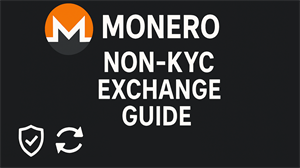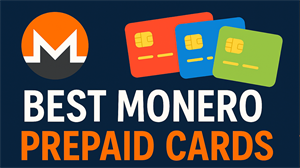
Disclaimer: This guide is educational and is not tax, legal, financial, or investment advice. Follow the laws in your local jurisdiction. You can find non-KYC exchanges and reviews on Monerica.com. This is not a recommendation for any particular service; it explains what to do regardless of which reputable provider you use. In general, stick to verified exchanges and sponsors.
Intro
Want to swap into Monero without handing over your ID and without getting flagged or timing out? In this guide, I’ll explain what non-KYC exchanges are, show the typical flow, share how to protect your privacy, give jurisdiction tips, and detail how to send and receive funds with one of these exchanges.
What Is a Non-KYC Exchange?
A non-KYC exchange (or swap service) lets you trade coins without submitting identity documents (like a driver’s license or passport) by default.
Types of Non-KYC Platforms
- Instant swaps: No account required to make a transaction.
- Instant swap aggregators: Compare rates across multiple instant swap providers.
- Centralized order books (custodial): Increasingly rare and not covered here.
- Atomic swaps: Require special software and often have limited trading pairs; not covered here.
How Instant Swaps Work
- Select the coin you will send, the amount, and the coin you want to receive; then place your order.
- Send the requested amount to the provided deposit address.
- After sufficient blockchain confirmations, the service sends your requested asset to your receive address.
There’s no order book for limit orders. You can usually pick fixed or floating rates:
Fixed: More certainty, often a slightly worse rate.
Floating: Usually better rate, exact receive amount finalizes when the swap executes.
Self-Custody Funding
Always fund the swap from a self-custody wallet you control. Do not send from a centralized exchange (e.g., Coinbase). CEX withdrawals are often batched or delayed, which risks order expiry. With self-custody you control fees, timing, and network—and can send the exact amount required.
Use a reputable wallet (e.g., the official Monero GUI wallet or Cake Wallet) to send funds.
Privacy Recommendations
- Use a VPN so the exchange can’t see your real IP address; use Tor if the exchange supports it.
- Some services forbid VPN/Tor—check their terms before you swap.
- Use a separate browser not signed into any accounts to reduce device fingerprinting.
- Consider a dedicated computer or virtual machine for swaps.
- Use a brand-new wallet or a fresh subaddress to reduce linkability.
Wallet Synchronization
Before swapping, ensure your Monero wallet is fully synced. If your wallet is out of sync, you might not see incoming funds even after the swap completes. If you’re sending XMR, you must be synced to avoid timing out the order.
On-Chain Transactions
Instant swaps are settled on-chain, not in an internal order-book database. Many services require ~10 Monero confirmations (~20 minutes), though some require more.
Jurisdiction, Region, and VPN Placement
Read the platform’s Terms of Service and check region restrictions. If a service operates only in certain countries, use a VPN exit in a supported region only if it complies with the site’s terms and local laws. Do not circumvent prohibitions.
Patterns to Avoid (to Prevent KYC Flags/Reviews)
- Avoid repeating identical large transfers from the same wallet to the same service in quick succession; this can trigger automated reviews.
- Large repeated amounts (e.g., $10k–$20k again and again) may lead to KYC once thresholds (e.g., $50k–$100k) are crossed.
- Do not split transactions to deliberately bypass KYC limits (structuring); this may violate laws and ToS.
- Practice ordinary privacy: vary timing and reasonable amounts; rotate among reputable providers.
Instant Swaps vs. Aggregators
Instant swaps: You interact directly with the provider.
Aggregators: Can help find good rates, but only across exchanges with APIs—they don’t cover every possible venue.
Example: Instant Swap Walk-Through
- Select your trading pair (e.g., send BTC, receive XMR).
- Enter the amount to send and paste your receive address.
- Choose fixed or floating (floating is usually best).
- Start the exchange and save the exchange ID for support.
- Send the exact amount to the deposit address on the correct network (e.g., native BTC vs. wrapped BTC on Ethereum).
- Keep the tab open while confirmations accumulate and the swap executes.
- Receive funds in your wallet.
Other Factors
- Refund address: Usually not needed, but helpful if the exchange can’t complete. If provided, use a fresh address.
- Some services let you pay fees in other currencies (less common).
- Exchange times vary from minutes to hours depending on provider and market conditions.
Stay Safe
Check exchange statuses, read reviews, and leave your own review on Monerica.com to help the community stay safe.
Summary
- Use a VPN (or Tor if supported).
- Never fund from a centralized exchange; use a private wallet.
- Use a new wallet or subaddress to reduce linkability.
- Fully sync your wallet before sending or expecting funds.
- Send the exact requested amount—no more, no less.
- Do not structure or time swaps in a suspicious way.
- Save the exchange ID in case you need support.
If you follow this guide, you can swap to and from Monero without requiring KYC, improving safety by protecting your identity from third parties and hackers.
